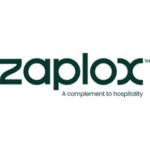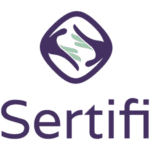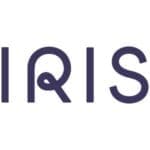 How to communicate with guests in 2023? That is the million-dollar question for hoteliers.
How to communicate with guests in 2023? That is the million-dollar question for hoteliers.
Just like guests’ expectations change, the strategy you use to communicate with them should also evolve and adapt. Thus, the basis for building a communication strategy is understanding how guest expectations have changed and what they want you to value.
Let’s go over those expectations in detail, understand how you as a hotelier can adopt strategies that can meet them and what the role of communication is to achieve that.
The guest trends you need to know:
Trend 1: Flexibility
Nowadays, travellers want flexibility so that they can connect all areas in their lives as they wish, which will also influence what they want from accommodation when travelling. 98% of travellers claimed that the best accommodations can meet several of their needs.
This can take several forms. For one, they want to have the brand provide flexible options, such as the possibility of long-term stays, and co-working spaces, among others.
However, that’s not all. In every single touchpoint with the guest, they want to have flexibility. With the booking, check-in, during the stay, and even after it. And how can you offer that to them? This is where “digital experience” and “communication” come together.
46% of customers say they want to have a contactless experience. How is that related to flexibility? Think about it: if a guest needs to do the check-in in person but is going to arrive late, they need to call or send a message informing the staff, and there’s no way to know if the team will check that message in time.
If, on the other hand, the check-in is managed fully digitally, the guest can inform or make the change directly and be sure that there will be no problem with it because everything will be registered.
For flexibility to happen, there needs to be smooth communication that allows for it both from the guest and the hotelier side. There needs to be the certainty that no problem can arise from, for example, changing a booking or being late for check-in.
The way to ensure this is by having a communication strategy that will allow the guest and the hotelier to communicate in real time and in an efficient way.
How to implement it into your strategy?
If you have a digital tool for guests where they can control everything about their booking, they will always have all the information needed one click away at any time.
This includes the possibility to check in digitally, to see which services in the hotel fit their needs, add the ones they want to their stay, add guests, and many other options.
With one central tool for all of this, guests don’t need to be wandering around different platforms or constantly contacting staff to be able to take these simple actions.
Flexibility also entails the channels through which you communicate with your guests. It is key that they can choose the channel they want. Some guests want to use email, but others prefer WhatsApp, SMS, or others, so you need to make sure you are flexible and communicate with all of them according to their preferences.
Trend 2: Wellness (upselling)
Nowadays people care more and more for their wellbeing, mentally and physically, and try to make it a part of the different areas of their lives. 77% of consumers take steps in their daily life to stay healthy, actively making choices to improve their wellbeing.
This includes activities such as meditation, exercising and eating healthy food. When you think about this, what’s the opportunity you see? It can be summed up in one word: upselling.
You as a hotelier have the chance to kill two birds with one stone, increasing your revenue while at the same time improving the guest experience and showing you care about their wellness.
How to implement it into your strategy?
By communicating specific wellness opportunities according to what they want during their journey. For example, offering a low-carb meal if they have that preference, spas and meditation spaces, a nutritionist or another expert who can guide them through a holistic stay.
You can create segmentations and target specific campaigns with these messages, all you need to do is understand which ones are right for each guest and use the right tools.
And how do you know what each guest wants explicitly?
You get to know your guests and what each of them would value. It may seem hard, but with the amount of data you have available about them, all you need to do is use it to understand who they are and what they want.
Over 80% of hoteliers recognise that technology is helping them to achieve their goals, and that is because with technology you can combine the right tools to gather and structure data and then use it to tailor the way you communicate with your guests.
By knowing your guests, you can personalise all the communication you have with them, both direct and indirect. This includes all the channels the guest has access to interact with you, with two main aspects to consider: where the guest finds and manages the information, and how they talk to you.
Trend 3 : Community and bonding
Globalisation is a concept that has existed for a while now, but it is becoming more and more real as time goes by.
People see other countries, cultures and communities as part of their journey, and want to connect with them rather than only considering those in their own community. This is valid for both international trips and domestic ones.
In 2022, 64% of those planning a trip had planned to take 2 or more domestic trips. This has an impact on the hospitality industry as well, with community-centric tourism becoming something they search for and long for.
Thus, when travelling, guests want the chance to get to know the culture of the local community and engage with them. Can you see where this is going?
The potential for a hospitality brand that enables guests to have this experience is huge.
How to implement it into your strategy?
You can provide a guide to the key places to visit in the city through a guest app, make your hotel a reflection of the community’s values, and help guests to know the culture. There are a lot of ways you can do it and communication is, once again, key.
Bring value to guests with the right tools
So, how can you build a strategy to meet all these trends which influence communication?
Simple, you use the right tools.
With digital tools, everything in the guest journey is easily accessible and allows for higher engagement by considering what each guest values. With this, not only you enhance the guest experience but also increase the number of upselling and cross-selling opportunities.
You can bring value to guests in a personalised way, making them want to come back and share their experiences with people they know.

















